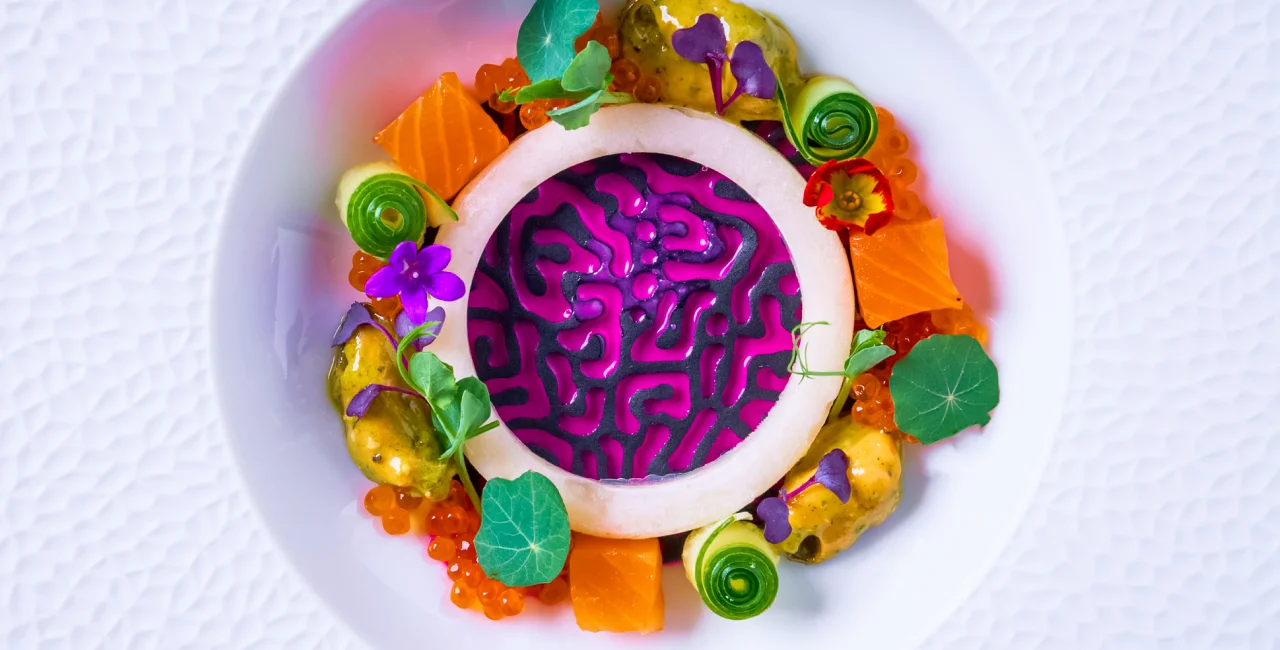Prague’s Wenceslas Square is seldom heralded as a nexus for gastronomic or cultural excellence. However, in 1912, the Hotel Neptune, housed within the walls of a structure dating back to the 14th century at the bottom of the square, stood at the center of a vibrant culinary and cultural scene.
It was here that hotelier Emil Ročák, in collaboration with architect Matěj Blecha, unveiled a feature of unparalleled novelty and sophistication for the time: an artificial Art Nouveau stalactite cave adorned with sandstone motifs from ancient Greek myth.
The subterranean space was, at one time, a restaurant, and then, after the First World War, a theater club where icons like comedian Vlasta Burian and the renowned duo of Voskovec and Werich performed.

This decadent decor and its rich history would be hidden from the public after the communists confiscated the hotel in 1948, converting it into a boiler room and coal warehouse. The hotel remained closed until 1974 when a university club briefly occupied the space. Following the Velvet Revolution in 1989, the original owner’s heirs opened the Triton Restaurant.
Today, the Triton, part of the Adria Hotel, preserves its architectural past while pushing the boundaries of contemporary dining forward. At the heart of the restaurant’s revival is Chef Tomáš Kohút, whose recent experiments include AI-assisted recipes, visionary vegetarian food, and recreating the last meal aboard history’s most famous shipwreck.

Not just a restaurant, but a theater
Though Kohút cites English chef Heston Blumenthal as an inspiration for his experimental style, he considers his approach largely self-driven. “If there’s a path that no one walks on, but for some reason people avoid it, then for me, this is the right way,” he explains, reflecting his penchant for venturing into uncharted culinary waters.
To that end, the Slovak chef’s recreation of the Titanic’s last dinner isn’t just a gimmick; it’s a tribute to the Triton’s roots, he says:
I got my hands on the menu from the last dinner on the Titanic for first class. Our restaurant was established the same year the Titanic sank [1912], so I found it interesting to connect these things and invent the menu and the whole story.”
Kohút says his team spent a lot of time inventing and fine-tuning the dishes, finding authentic or similar-tasting wines to pair with the food, and even working out minor details down to the faux water-logged menu.
The resulting Titanic tasting menu includes classic dishes with a modern twist, like the Consommé Olga, infused with Vietnamese flavors of pineapple, lemongrass, and ginger (a tribute to Kohút’s Vietnamese partner).
The tender lamb with mint sauce is enriched with miso paste and served with parsley puree, peas, and spinach dumplings. It’s paired with Chateauneuf du Pape, a dense southern French red; the meal incorporates rosé wine from Provence, Sauternes, and sherry.

The second course features foie gras, celery marinated in hazelnut oil, and buckwheat popcorn with vanilla and cognac. The pièce de résistance is the Waldorf dessert, made with fermented apples. Kohút slow-cooks the apples at 60°C for 60 days. From this, he creates a pudding with raisins, nuts, and ice cream topped with a slightly acidic juice.

Art gastronomy that's accessible
Kohút’s vision isn’t limited to themed meals. Having taken the experimental reigns from Triton’s previous chef, whose focus was molecular gastronomy, he has moved the menu into the realm of art gastronomy. Futuristic and fantastical colors, textures, and crystalline flavors meet on a plate that doubles as a canvas.
The Czech modern art menu deconstructs Bohemian classics (confit of pork flank, pickled cabbage, truffle dumpling, shallot-caviar, and beetroot is just one example). The new vegetarian tasting menu features faux “Duck” (celeriac with a vegetarian demi-glace/ chickpeas, Daikon radish, and sesame). The candlelight menu sounds like something straight from Dionysus’ table: Pigeon, semolina, grapes, figs, Armagnac, blackberry.

While Triton’s menu reflects contemporary culinary trends like fermentation, fusion, and zero-waste dining, it never feels showy or forced. Though he’s willing to take risks in the kitchen, Kohút says there are some trends you’ll never find on his menu, such as “extreme use of adjectives” (homemade, handmade, baked on charcoal) to describe foods that aren’t very good. He adds that no one who visits Triton will go away hungry.
In a city crowded with familiar dining establishments and tourist-heavy spots, Triton distinguishes itself as an unexpected treasure. It interweaves the allure of history, the beauty of art, and a daring chef’s vision to give guests a dining experience meant to go on and on.
Says Chef Kohút: "You will never achieve success by just doing what everyone else is doing. In our restaurant, I try to incorporate emotions and a story into the food in addition to the taste and visual aspects. I like to think big.”












 Reading time: 4 minutes
Reading time: 4 minutes 




















